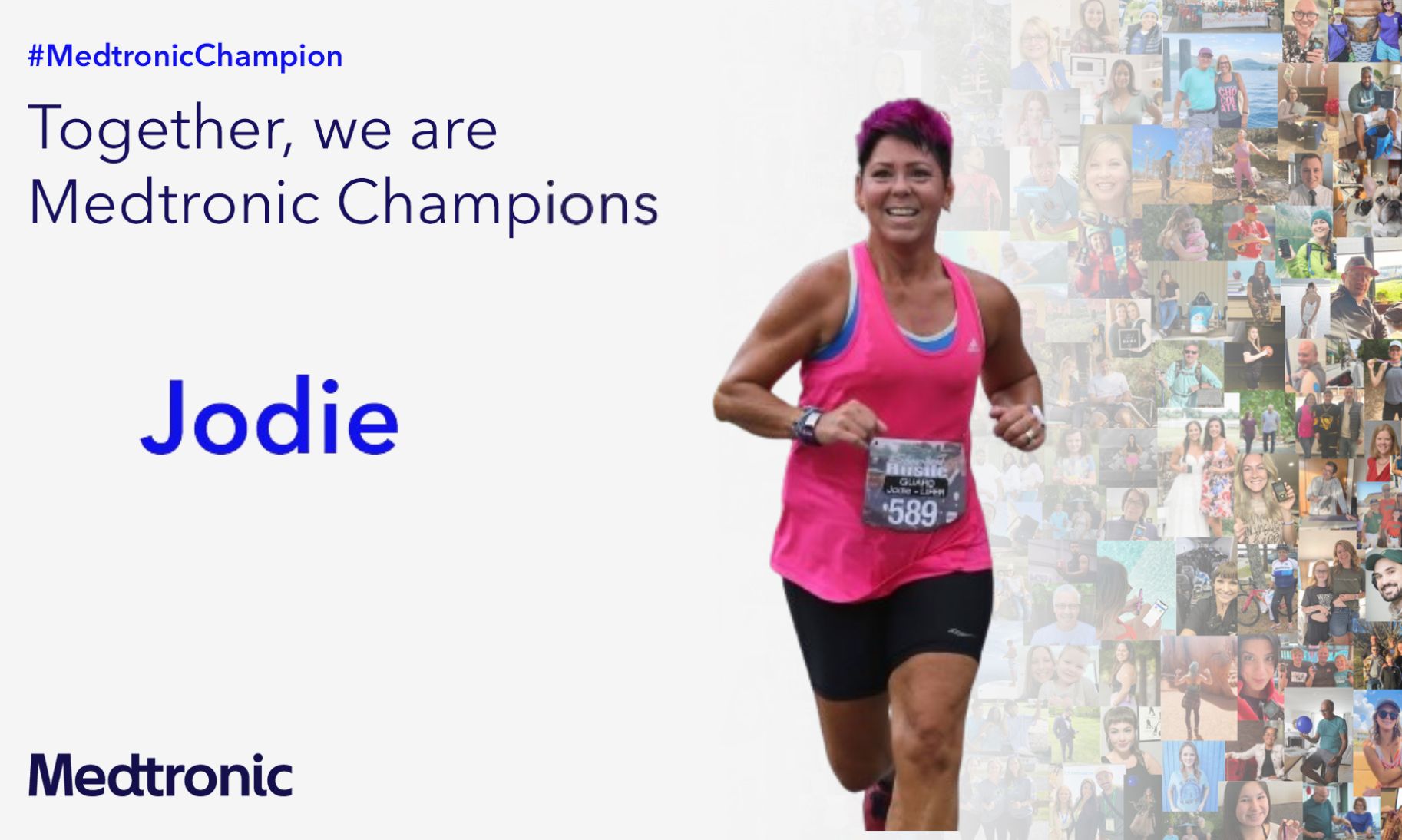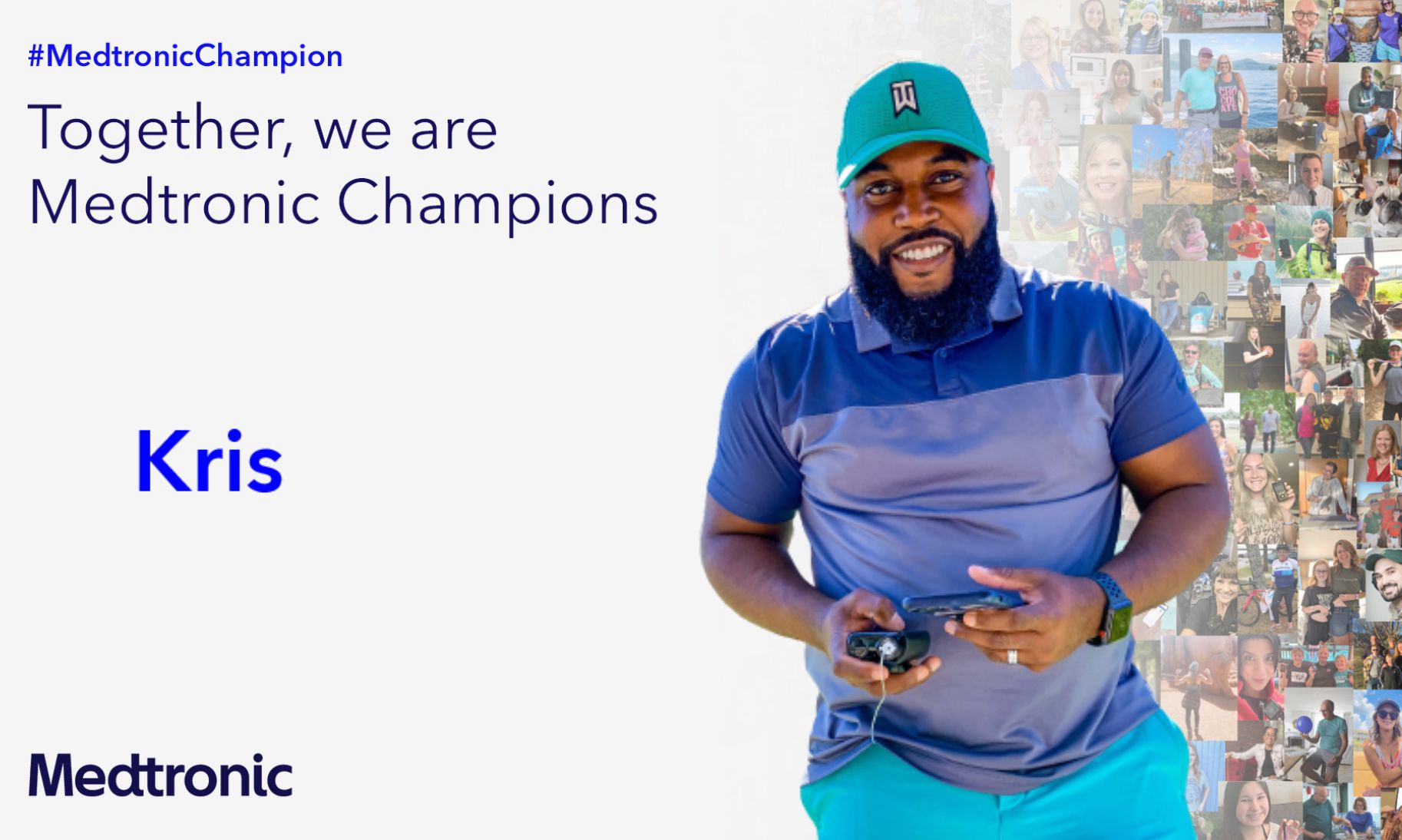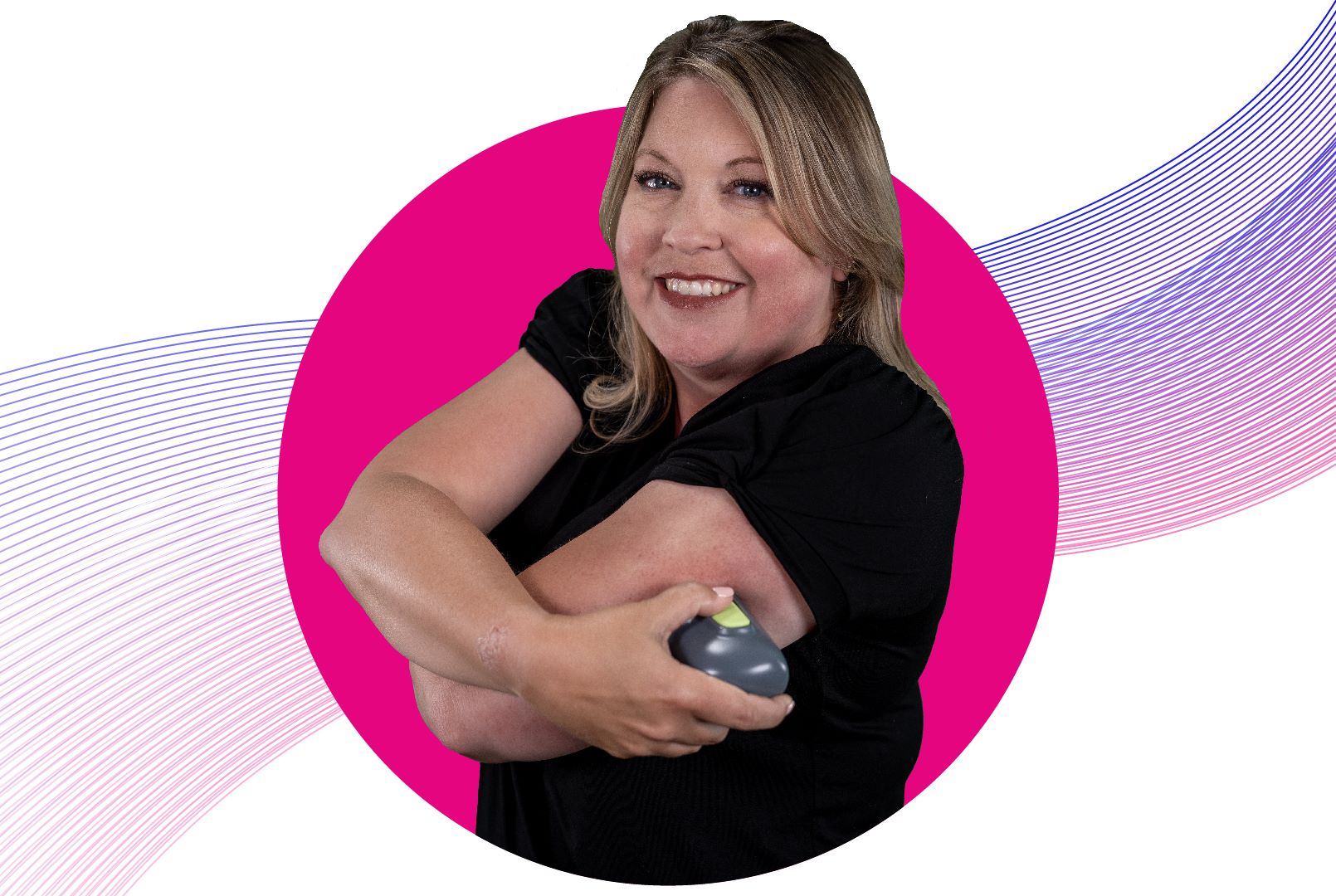Help prevent hyperglycemia with the MiniMed™ 780G system

Meet #MiniMedChampion Jodie
Meet Jodie Snavely, who’s been living with type 1 diabetes for more than 40 years. Growing up as part of an athletic family, Jodie has found exercising — specifically, running — to be a key part of effectively managing both her diagnosis and her mental health.
She currently lives in Mansfield, Ohio, and runs almost every day, rain or shine, focusing on marathon training in the spring and summer and competing in half-marathons in the fall.
She’s been on the MiniMed™ 780G system since June of 2023, and has found her new insulin pump to be instrumental when it comes to preventing the hyperglycemia (high blood sugar) she used to experience after her longer runs. Check out her story below.
Going off to college — with a diabetes diagnosis
I was diagnosed when I was 18, and, of course, I had to take shots and it was scary. Then I went off to college and really didn’t do what I was supposed to do, being diabetic — you know, when you’re young, you just don’t quite understand all that stuff. And then I had an endocrinologist say to me, “Either you shape up, or you’re going to die.”
It was as simple as that. I basically thought, “I gotta turn everything around.”
Learning to love an insulin pump
When my endocrinologist suggested a Medtronic pump, it took me a while to come around because I thought, “Gosh…to have a piece of equipment attached to me for the rest of my life!” That’s not an easy thing to understand. But now, I look at it almost as if it is my pancreas — just on the outside of my body! I don’t even think about it. It’s part of my life, and I’m so thankful for it.
The MiniMed™ 780G system helps with high blood sugar
I’ve always done aerobics and walking, and when I turned 30, I decided to start running and doing races and half-marathons. Before, when I was doing half-marathons and running for about two hours, I had to be very careful about how much to eat before; how much insulin to give myself; how my levels would change. Trying to manage all that myself felt like a lot of guesswork! And then after I stopped running, my blood sugar would still go up — sometimes really high. But with the latest technology from Medtronic, that happens less frequently.
Before the MiniMed™ 780G system, I didn’t want my pump to give me too much insulin while running, because I didn’t want to go low and have to stop and deal with that — I’m very competitive and wanted to keep running the entire time.
So, I worked with my endocrinologist to find the right settings for me and my active lifestyle. Now with the MiniMed™ 780G system, it’s like the system is saying, “I know what’s happening. You’re trending up; I know how much to give you. Now you’re going down, so I won’t give you as much.” I don’t have those sugar spikes anymore — my sugar levels are more even.
Learning to trust the system
My endocrinologist told me not to override the pump and not to give myself those fake carb boluses. I needed to let the algorithm do its work. The system needed to learn my body.
That was hard at first, but now I’m really grateful for the MiniMed™ 780G system because it relaxes my mind and makes me not worry about whether I gave myself too much insulin or not enough. I just sit back and let the pump do its thing. It’s fantastic!
Running for a better life and future
To me, running is my relaxation. I just feel great afterwards, mentally. It keeps me focused, happy. I love being competitive. I love that when I’m running, I’m keeping myself healthy for as long as I possibly can to avoid complications down the road.
None of us diabetics want to have high blood sugar all the time — it’s not good for your eyes, your hands, your feet. It’s just going to wreak havoc on your body! I don’t want high cholesterol. I don’t want to go blind. I don’t want to lose a leg. I’m not going to let diabetes take me down.
I love when I’m at a race and people ask me about my pump or the sensor on the back of my arm, or how diabetes works with races. I’d like to be an inspiration for other people living with diabetes — if they see me, maybe they can be inspired not to let diabetes keep them down.
“I am a MiniMed Champion because I want to inspire others that diabetes doesn’t have to be doom and gloom all the time!”
The testimonial above relates an account of an individual’s experience using a Medtronic device. The account is genuine, typical, and documented. However, this individual’s experience does not provide any indication, guide, warranty or guarantee as to the response or experience other people may have using the device. The experience other individuals have with the device could be different. Experiences can and do vary. Please talk to your doctor about your condition and the risks and benefits of Medtronic devices.
Important safety information: MiniMed™ 780G system with SmartGuard™ technology with Guardian™ 4 sensor
The MiniMed™ 780G system is intended for continuous delivery of basal insulin at selectable rates, and the administration of insulin boluses at selectable amounts for the management of type 1 diabetes mellitus in persons seven years of age and older requiring insulin as well as for the continuous monitoring and trending of glucose levels in the fluid under the skin. The MiniMed™ 780G system includes SmartGuard™ technology, which can be programmed to automatically adjust insulin delivery based on the continuous glucose monitoring (CGM) sensor glucose values and can suspend delivery of insulin when the sensor glucose (SG) value falls below or is predicted to fall below predefined threshold values.
The Medtronic MiniMed™ 780G system consists of the following devices: MiniMed™ 780G insulin pump, the Guardian™ 4 transmitter, the Guardian™ 4 sensor, One-press serter, the Accu-Chek™ Guide Link blood glucose meter, and the Accu-Chek™ Guide test strips. The system requires a prescription from a healthcare professional.
The Guardian™ 4 sensor is intended for use with the MiniMed™ 780G system and the Guardian 4 transmitter to monitor glucose levels for the management of diabetes. The sensor is intended for single use and requires a prescription. The Guardian™ 4 sensor is indicated for up to seven days of continuous use.
The Guardian™ 4 sensor is not intended to be used directly to make therapy adjustments while the MiniMed™ 780G is operating in manual mode. All therapy adjustments in manual mode should be based on measurements obtained using a blood glucose meter and not on values provided by the Guardian™ 4 sensor. The Guardian™ 4 sensor has been studied and is approved for use in patients ages 7 years and older and in the arm insertion site only. Do not use the Guardian™ 4 sensor in the abdomen or other body sites including the buttocks, due to unknown or different performance that could result in hypoglycemia or hyperglycemia.
WARNING: Do not use the SmartGuard™ feature for people who require less than 8 units or more than 250 units of total daily insulin per day. A total daily dose of at least 8 units, but no more than 250 units, is required to operate in the SmartGuard™ feature. |



